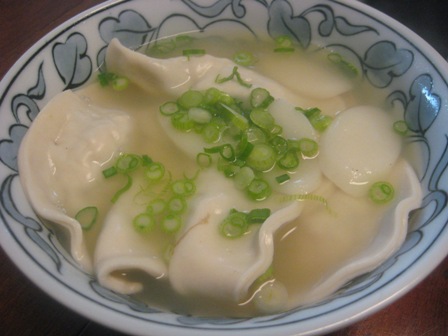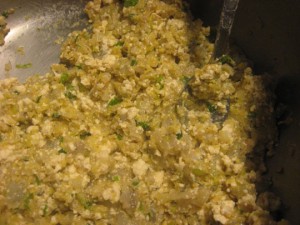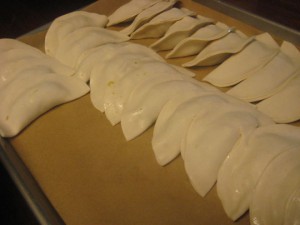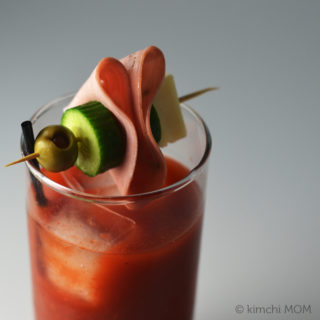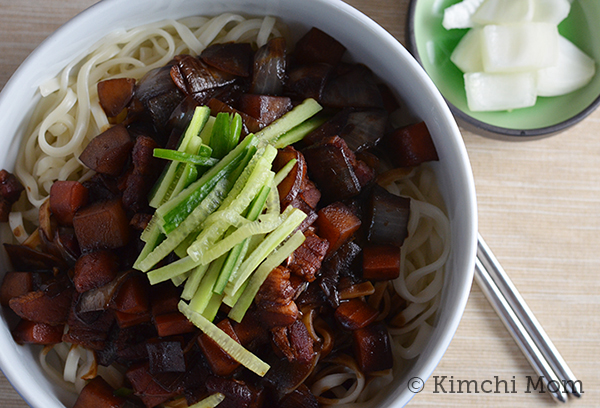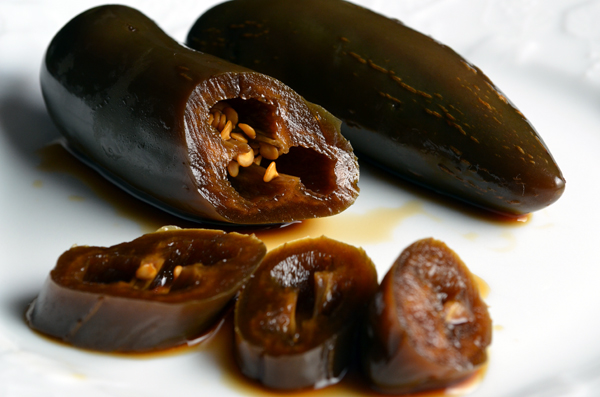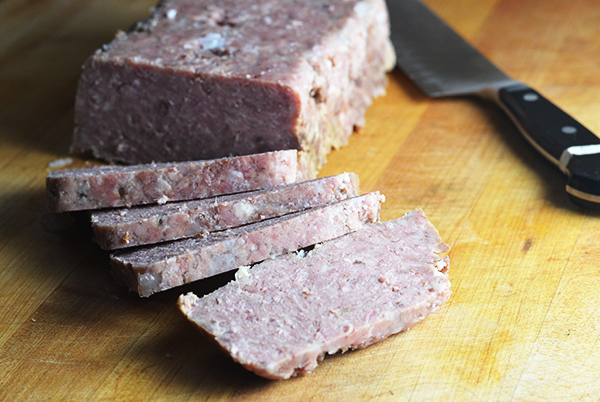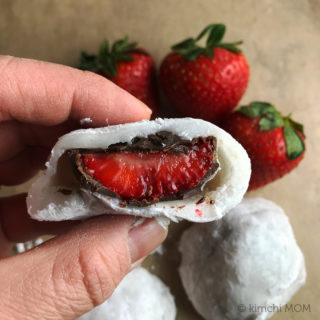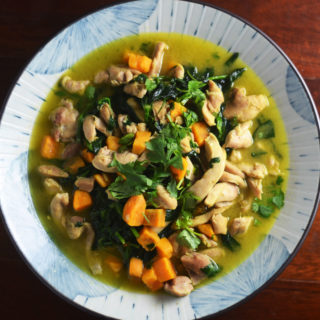Traditionally, dduk mandoo guk (dumpling soup with rice cake) is eaten on new year’s day. And typically, the soup uses a beef-based broth and the mandoo (dumpling) filling includes ground beef. As I have mentioned in previous posts, my DH stopped eating meat a couple of years ago, but still eats seafood. My challenge this year was to make this dish with a seafood base. Piece ‘o rice cake. My mom’s recipe calls for a pound of ground beef, but I substituted the beef with a pound of shrimp. And for the broth, I experimented with kombu and bonito flakes and made a dashi (a Japanese soup broth). I cheated a bit and threw in a couple of tablespoons of instant dashi for a stronger broth. The recipe has a number of components, but it’s not too complex.
Dduk Mandoo Guk
For the soup:
10-12 c. water
A handful of bonito flakes or about 1 cup
4-5 pieces of kombu (the kombu I bought came in 1-inch by 3-inch pieces)
For the mandoo (this yields about 60 dumplings):
1 lb. shrimp, chopped finely
1 small head of savoy cabbage (about 6-inch diameter), roughly chopped
1 16 oz. package of mung bean sprouts
1 14 oz pkg. firm tofu, drained
1 T. garlic powder
4 T. soy sauce
3 T. sesame oil
1/2 t. ground black pepper
A couple of pinches of salt
4 green onions, chopped
1 egg, lightly beaten
Dduk (the rice cakes shaped like ovals are the ones you want), about 4 oz. per person
Mandoo wrappers or skins, enough for about 60
1 egg, lightly beaten
First, the tofu needs to be drained or pressed. Line a strainer with a couple sheets of paper towel and place the block of tofu on top. Place the strainer over a bowl. Gently press down on the tofu. Place a bowl or plate or other weight on top of the tofu and let sit for about 15-20 minutes.
Place the cabbage and mung bean sprouts in a large pot of water and bring to boil. Let simmer over medium high heat until cabbage is tender. Drain the vegetables in a colander and rinse in cool water. Take handfuls of the mixture and squeeze out as much water as you can and set aside on a cutting board. Once everything is drained, finely chop the mixture.
Mix all the ingredients for the mandoo in a large bowl. Work through the mixture with your hands making sure everything is well blended and evenly distributed. Now we’re ready to make the mandoo!
Get your work station or mise en place ready – wrappers, egg wash, mandoo mix, and a platter or a baking sheet pan to lay out your finished mandoo. Take a wrapper and lay it flat on the palm of your hand. Brush a light layer of egg wash on the edge of one-half the wrapper. Scoop a teaspoon or two of the filling in the middle. Fold the edges together and firmly press the edges to seal the mandoo. You don’t want to overstuff the mandoo or they’ll explode when you cook them. Not pretty. Unfortunately I couldn’t take pics of this process, but here’s a shot of the finished product. A beautiful sight, ain’t it?
Soak dduk in a bowl of cold water and let sit for at least 20 minutes. Set aside.
Now we’re ready to make the soup. Add the bonito flakes and kombu to the water. Bring to a boil and simmer for about 20 minutes. If you have cheesecloth, you can wrap the flakes in the cheesecloth to make clean up easier. Or you can use one of those tea infuser balls which is even more convenient.
Strain out the kombu and bonito flakes. At this point, taste and add a couple of tablespoons of soy sauce or instant dashi if you want more flavor. Bring the broth to a boil. Drop in the mandoo and rice cakes. Bring back to a boil and simmer. The mandoo are cooked through when they float to the top. Or you can take one out and cut it in half and check the filling.
